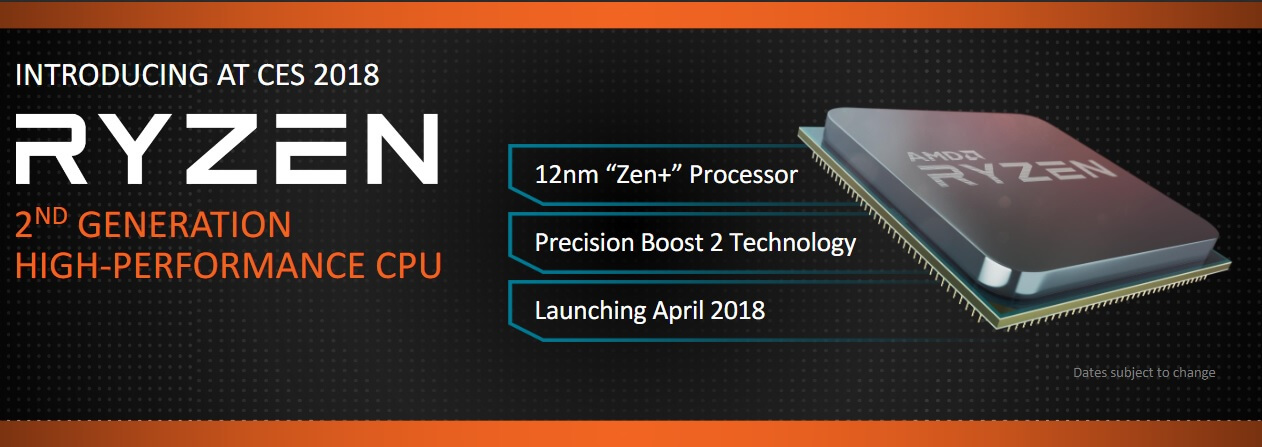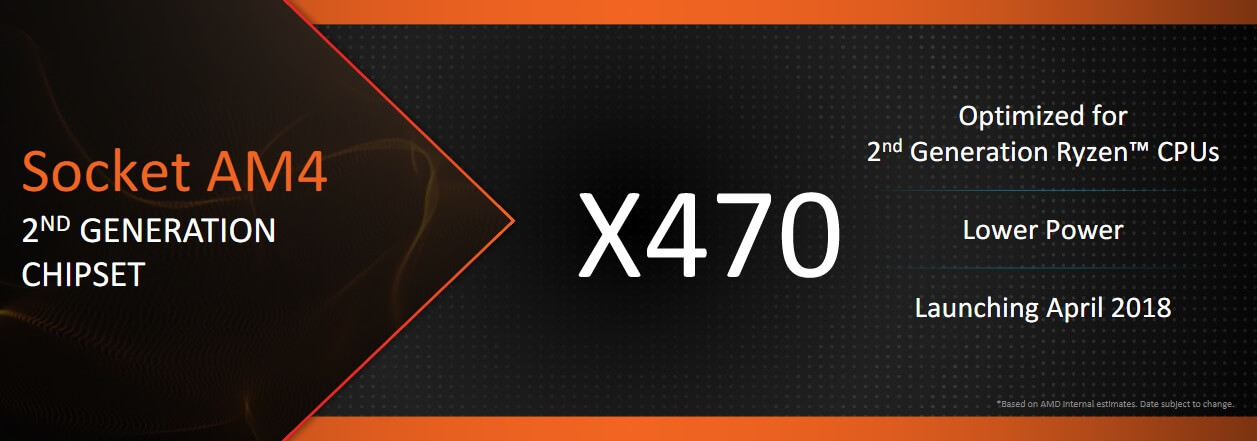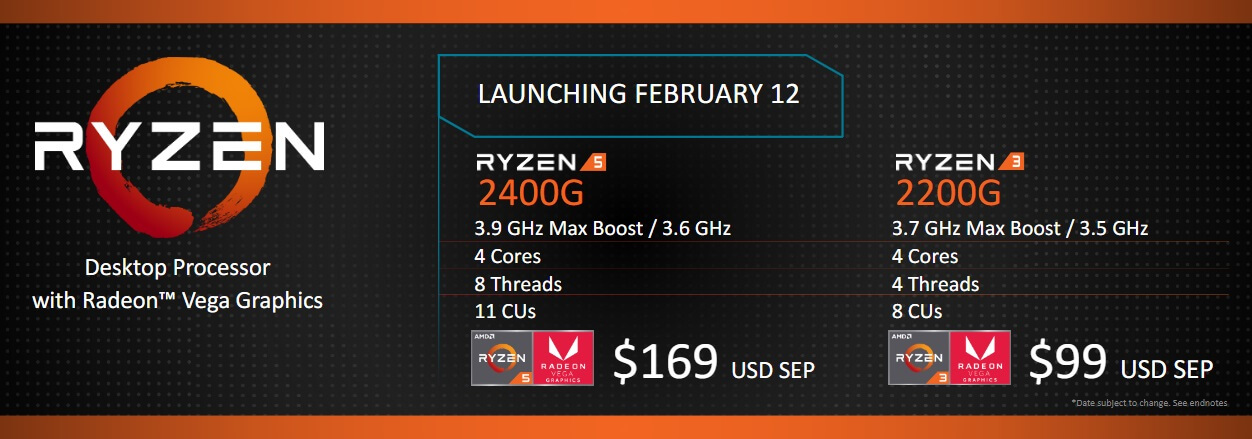- AMD Community
- Communities
- General Discussions
- General Discussions
- Re: AMD's 2nd-gen Ryzen is coming in April, deskto...
General Discussions
- Subscribe to RSS Feed
- Mark Topic as New
- Mark Topic as Read
- Float this Topic for Current User
- Bookmark
- Subscribe
- Mute
- Printer Friendly Page
- Mark as New
- Bookmark
- Subscribe
- Mute
- Subscribe to RSS Feed
- Permalink
- Report Inappropriate Content
AMD's 2nd-gen Ryzen is coming in April, desktop Ryzen APUs arrive February 12
- Mark as New
- Bookmark
- Subscribe
- Mute
- Subscribe to RSS Feed
- Permalink
- Report Inappropriate Content
anyone knows how fast is that 8 CU's and 11 CU's vega? thanks!!!
- Mark as New
- Bookmark
- Subscribe
- Mute
- Subscribe to RSS Feed
- Permalink
- Report Inappropriate Content
Know what ticks me off? AMD is still refusing to integrate even a basic graphics adapter into all of their processors the way Intel does. While it may be basic, even Intel HD graphics are good enough for casual games and hardware acceleration of website elements, not to mention video decoding, and the best part is that it gives you a backup GPU in the event that your main one goes kaput.
- Mark as New
- Bookmark
- Subscribe
- Mute
- Subscribe to RSS Feed
- Permalink
- Report Inappropriate Content
If it comes down to using the die space for additional CPU resources that can be utilized by several applications, or GPU cores that will go unused due to a discrete GPU, I'll take the CPU resources every time. Sure, in the off chance a GPU fails, it would be nice to have a backup, but using die space for something I probably will never use over something that can be used far more consistently seems beyond wasteful. Probably why Intel's enthusiast's X series platform processors don't have iGPUs either.
And if the system doesn't need a discrete GPU, then the new APUs AMD is putting put will serve just fine.
- Mark as New
- Bookmark
- Subscribe
- Mute
- Subscribe to RSS Feed
- Permalink
- Report Inappropriate Content
May be time to upgrade the aging setup I used for my parents movie system. That is still based on a llano A8-3870.
- Mark as New
- Bookmark
- Subscribe
- Mute
- Subscribe to RSS Feed
- Permalink
- Report Inappropriate Content
Now we have this in the mix:
Intel launches five Kaby Lake G CPUs with Radeon RX Vega graphics built-in
- Mark as New
- Bookmark
- Subscribe
- Mute
- Subscribe to RSS Feed
- Permalink
- Report Inappropriate Content
24 CUs vs the 11 found in the AMD APUs is impressive. Any info on a socket for these, or are they soldered in mobile SOCs only? 65W to 100W seems high for the mobile space, unless these are destined for higher end laptops.
- Mark as New
- Bookmark
- Subscribe
- Mute
- Subscribe to RSS Feed
- Permalink
- Report Inappropriate Content
Those are SOCs only for Intel ultrathin laptops, a market AMD does not compete in.


